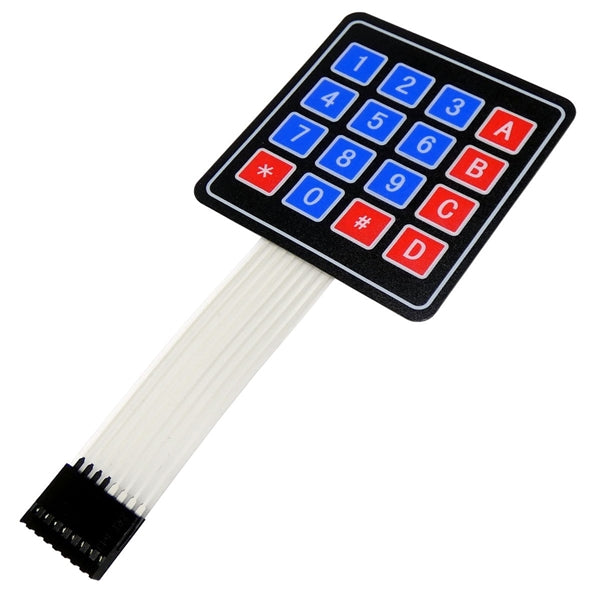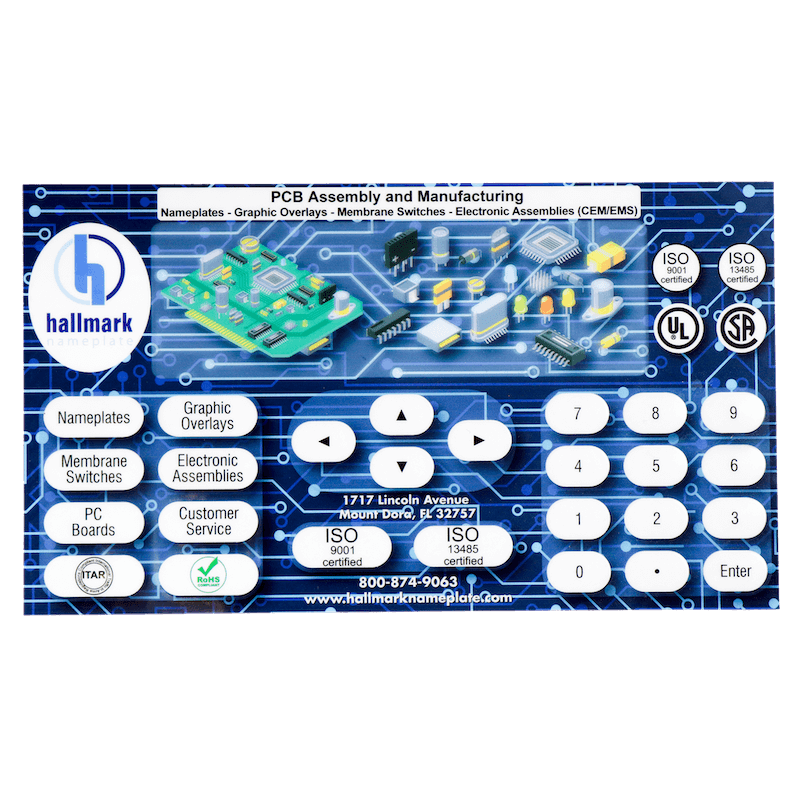Understanding Membrane Layer Switches Over: The Key to Reliable and long lasting Controls

What Are Membrane Layer Switches?
Membrane switches are a sophisticated option in the world of interface modern technology, incorporating functionality and design seamlessly. These devices work as an interface between users and electronic systems, integrating several components into a compact format. Generally built from versatile, thin layers of materials, membrane buttons are made to react to touch, making it possible for customers to connect with equipment and electronic gadgets efficiently.
The primary elements of a membrane layer button include a printed circuit layer, graphic overlay, and a spacer layer that prevents unintended activation. The visuals overlay can be tailored to show brand identity or user choices, boosting aesthetic appeals while ensuring use. Membrane layer buttons are frequently utilized in various applications, including medical tools, customer electronic devices, and commercial devices, owing to their toughness and resistance to environmental elements such as moisture and dirt.
Among the crucial benefits of membrane buttons is their capability to endure deterioration, making them ideal for high-traffic settings. Additionally, they are light-weight and require very little area, enabling cutting-edge styles in product development. On the whole, membrane switches over represent a efficient and functional choice for contemporary electronic interfaces, weding modern technology with user-centric layout principles.
Just How Membrane Changes Job
The procedure of membrane layer switches hinges on a basic yet reliable device that translates user input into digital signals. When a customer presses the button, the leading layer deforms, allowing a conductive element in the circuit layer to make contact with a matching conductive pad on the bottom of the visuals overlay.
The layout of membrane layer switches can vary, but they typically incorporate domes or tactile aspects to supply responses to the customer, boosting the total experience - membrane switch. The products used in membrane switches, such as polyester or polycarbonate, add to their toughness and resistance to ecological variables, consisting of dampness and dirt. The published circuits are generally enveloped, which shields them from wear and tear over time.
Benefits of Membrane Switches

Additionally, membrane switches are known for their sturdiness. Built from durable materials, they are resistant to dust, wetness, and physical wear, which substantially prolongs their life expectancy compared to conventional mechanical switches. This sturdiness makes them especially appropriate for high-traffic environments and applications requiring longevity.
Another substantial advantage is the simplicity of cleaning and maintenance. The smooth surface of membrane layer check my source switches over lessens dust accumulation and is frequently unsusceptible spills, making them ideal for setups that call for regular sanitization.
Furthermore, membrane buttons use a streamlined profile, bring about a thinner layout that can be integrated into numerous gadgets without adding mass. This attribute not only enhances the visual charm but additionally adds to a more ergonomic item style.
Applications of Membrane Buttons
Straightforward and flexible, membrane layer switches find applications throughout a vast array of markets, consisting of medical devices, customer electronics, and commercial equipment. In the clinical area, these buttons are integral to gadgets such as analysis devices, client surveillance systems, and infusion pumps, where reliability and simplicity of cleaning are essential. Their capability to maintain and stand up to harsh environments capability makes them perfect for such applications.

In customer electronics, membrane buttons are used in products like microwaves, washing equipments, and remote controls - membrane switch. Their smooth layout enables user-friendly interface, boosting the overall user experience while supplying longevity and resistance to damage
Commercial tools also benefits from membrane switches, especially in control panels for equipment and automation systems. These buttons supply protection against dust and moisture, making certain find out here now regular efficiency in challenging environments. Their personalized attributes enable makers to customize them to certain functional requirements, improving effectiveness and performance.
Choosing the Right Membrane Switch Over
When picking a membrane layer button, it is important to think about different elements that influence efficiency and viability for particular applications. The primary considerations consist of ecological conditions, tactile responses, longevity, and layout specs.
First, evaluate the operating atmosphere; switches revealed to wetness, chemicals, or extreme temperatures call for certain materials to ensure long life and functionality. Next off, assess the requirement for tactile comments. Relying on user interaction, some applications might profit from a responsive feedback to validate activation, while others might choose a non-tactile design for visual factors.
Sturdiness is an additional essential variable; membrane layer buttons ought to be made to stand up to frequent usage, impacts, and abrasion. Make certain the selected button can endure the anticipated lifecycle, particularly in high-usage circumstances.

Verdict
In verdict, membrane layer switches act as necessary elements in the layout of dependable and sturdy control systems across various markets. Their compact layout, combined with durable construction and personalized functions, boosts individual communication while guaranteeing long life sought after settings. The flexibility of membrane layer switches enables customized services that fulfill specific functional demands, reinforcing their relevance in contemporary innovation. As industries proceed to advance, the significance of incorporating reliable membrane switch remedies can Recommended Reading not be overstated.
Membrane changes represent an important facet of modern-day user interface layout, mixing capability with strength in numerous applications.Membrane buttons are an innovative service in the realm of individual interface modern technology, combining functionality and style flawlessly. Typically constructed from flexible, slim layers of products, membrane layer buttons are created to respond to touch, allowing users to communicate with machinery and digital tools properly.
The style of membrane buttons can vary, yet they often include domes or responsive aspects to offer feedback to the customer, boosting the general experience.In conclusion, membrane switches over serve as important components in the layout of sturdy and trustworthy control systems across numerous markets.